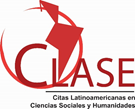Perfil químico de 12 Clones Tipo Nacional de pasta de cacao (Theobroma cacao L.)
Resumen
En Quevedo, Provincia de Los Ríos, se lleva a cabo una investigación para caracterizar la pasta de cacao de doce tratamientos de cacao Tipo Nacional. El objetivo es evaluar su idoneidad para la industria y preservar su identidad ligada al "sabor arriba". La evaluación química se realizó en los laboratorios de Bromatología de la UTEQ y Santa Catalina INIAP. Se utilizó un Diseño Experimental Completamente al Azar con doce tratamientos y cuatro repeticiones, totalizando 48 muestras. La prueba de Tukey (P ?0.05) se empleó para identificar diferencias entre medias de tratamientos; no se hallaron diferencias estadísticas en temperatura, ni pH de la masa de cacao. Sin embargo, para la variable de grasa, se observaron diferencias estadísticas entre tratamientos. Los tratamientos CCN-51 (41.91) y EET-103 (39.13) presentaron mayores porcentajes de grasa, mientras que el T10 L46H75 (23.73) mostró el menor porcentaje. En relación con los polifenoles totales (mg/g), los tratamientos L40H49 (86.00), L15H31 (85.25) y L17H30 (81.42) registraron los valores más altos. En la variable teobromina/cafeína, el tratamiento L12H27 obtuvo el valor más bajo (3.49%), posiblemente debido a un alto contenido de cafeína y bajo contenido de proteína.
Palabras clave:
Calidad, cafeína, fermentación, pasta de cacao, teobromina.
ABSTRACT
An investigation was conducted in Quevedo, Los Ríos Province, to characterize the cocoa paste of twelve treatments of National Type cocoa. The objective was to assess its suitability for the industry and preserve its identity linked to the "sabor arriba" flavor. The chemical evaluation took place in the Bromatology laboratories of UTEQ and Santa Catalina INIAP. A Completely Randomized Experimental Design was used with twelve treatments and four replications, totaling 48 samples. The Tukey test (P?0.05) was employed to identify differences in treatment means; no statistical differences were found in temperature or pH of the cocoa mass. However, for the fat content variable, statistical differences among treatments were observed. Treatments CCN-51 (41.91) and EET-103 (39.13) showed higher fat percentages, while T10 L46H75 (23.73) displayed the lowest percentage. Regarding total polyphenols (mg/g), treatments L40H49 (86.00), L15H31 (85.25), and L17H30 (81.42) recorded the highest values. In the theobromine/caffeine variable, treatment L12H27 obtained the lowest value (3.49%), possibly due to a high caffeine content and low protein content.
Keywords:
Quality, Caffeine, Fermentation, Cocoa Paste, Theobromine
Publicado
Cómo citar
Número
Sección
Licencia
Derechos de autor 2024 Editorial "Universo Sur"

Esta obra está bajo una licencia internacional Creative Commons Atribución-NoComercial-SinDerivadas 4.0.
La editorial "Universo Sur", de la Universidad de Cienfuegos, publica el contenido de la Revista "Universidad y Sociedad" bajo una Licencia Creative Commons Atribución-NoComercial-SinDerivar 4.0 Internacional.
© Podrá reproducirse, de forma parcial o total, el contenido de esta publicación, siempre que se haga de forma literal y se mencione la fuente.










